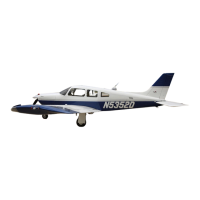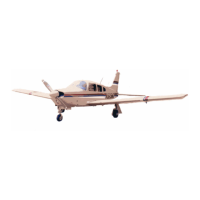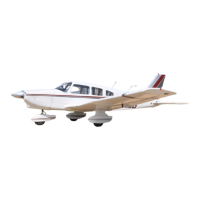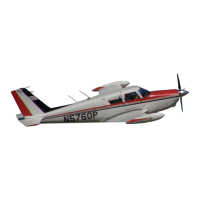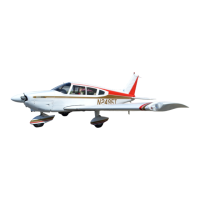PARKING.
When parking the airplane, insure that it is sufficiently protected against adverse weather conditions and
presents no danger to other aircraft. When parking the airplane for any length of time or overnight, it is
recommended that it be moored.
1. To park the airplane, head it into the wind, if possible.
2. Set the parking brake by pulling back the brake lever and depressing the knob attached to the left side
of the handle, then release the handle. To release the parking brake, pull back on the brake lever to disengage
the catch mechanism, and allow the handle to swing forward.
—NOTE—
Care should be taken when setting brakes that are overheated or
during cold weather when accumulated moisture may freeze the
brakes.
3. The aileron and stabilator may be locked by using the front seat belt.
MOORING.
The airplane is moored to insure its immovability, protection and security under various weather
conditions. In order to properly moor the airplane use the following procedures:
1. Head the airplane into the wind, if possible.
2. Block the wheels.
3. Lock the aileron and stabilator controls using the front seat belt.
4. Secure tie-down ropes to the wing tie-down rings and the tail skid at approximately 45 degree angles
to the ground. When using rope constructed of non-synthetic material, leave sufficient slack to avoid damage
to the airplane when the ropes contract due to moisture.
—CAUTION—
Use square or bowline knots. Do not use slip knots.
—NOTE—
Additional preparations for high winds include using tie-down
ropes from the landing gear forks, and securing the rudder.
5. Install pitot tube cover, if available.
LOCKING AIRPLANE.
The cabin and baggage compartment doors are provided with a key lock on the outside. The ignition
switch and cabin door require the same key while the baggage compartment door has a separate key.
—END—
10 - 20 - 02
Page - 10-01
December 1, 1978
1C20
PIPER AIRCRAFT
PA-28RT-201 / 201T
*MAINTENANCE MANUAL
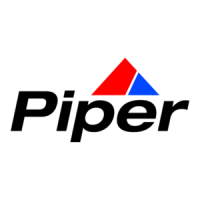
